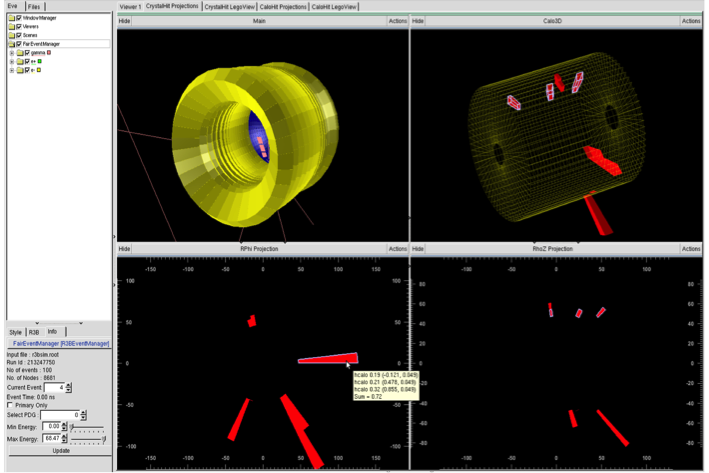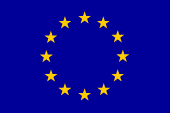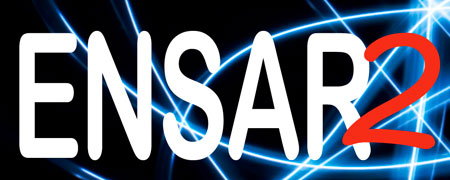ENSAR2 [Work Package 13]
The nuclear structure and reaction community is at a stage where a substantial amount of R&D work has been performed for various emerging experimental facilities but a lot still needs to be done before we are ready for the next generation experiments at medium and large-scale facilities. At the same time, one needs to prepare for the analysis of the obtained data as they become available in the coming years. We have achieved a number of goals in this direction within the SiNuRSE work package of ENSAR as is evident from the milestones and the deliverables. A platform based on the GEANT4 simulation code has been developed and can now be used for experiments foreseen at the ENSAR2 facilities. New event generators and improved physics models relevant in the energy domain of ENSAR2 facilities have now been implemented in GEANT4 and specific “physicslists” created. Expert members of the community know how to deal with databases and working examples have been developed to show how all this would work. Some members of SiNuRSE have become members of the GEANT4 collaboration, which is very important to make sure that the needs of the nuclear- physics community will be taken into consideration. We now need to take further steps to advance our simulation tools, in particular in the domains defined further in this project and also to come up with new tools which are essential for the analysis of the events. These developments have to be done within ENSAR2 to maximise the output of the efforts which will be spent on these issues as the developers are also members of the experimental collaborations within ENSAR2.
Coordinator: Nasser Kalantar (RUG) Deputy coordinator: Héctor Alvarez Pol (USC) Involved partners:RUG (Coordinator: Nasser Kalantar), CEA SPhN (Coordinator: Sylvie Leray), JLU/GSI (Coordinator: Christoph Scheidenberger), FFCUL (Coordinator: Daniel Galaviz Redondo), CIEMAT (Coordinator: Daniel Cano Ott), CSIC/IFIC (Coordinator: Alejandro Algora), USC GENP (Coordinator: Héctor Alvarez Pol)
 Example of a calorimeter event viewer in ENSARRoot.
Example of a calorimeter event viewer in ENSARRoot.
-
Task 2: Development of analysis tools (USC)
ENSARRoot has been developed during the working period of the ENSAR project as a platform for the simulation and analysis of nuclear-physics experimental setups. The code is functional but it lacks of a proper set of example cases that allow the users to select and copy from applications or detector implementations similar to their own utilisation. The specific tasks we plan to perform are:
-
Subtask 2.1: Implementation of physical applications (USC, FFCUL)
a) PIGE: We plan to include a PIGE (Proton-Induced Gamma-ray Emission, based on the detection of the prompt gamma rays emitted from nuclei that are in an excited state following a proton-induced nuclear reaction) simulation and data- analysis application in ENSARRoot, linked to the Tandem accelerator of the CTN/IST (Lisbon).
b) (p,gamma) reactions: Simulation and analysis code for a set of reactions for the detailed analysis of the gamma cascades from the decay of unbound systems in the nuclei 56Fe and 60Ni, near or at the shell closer Z=28, providing very valuable insights in the understanding of the nuclear continuum just above the particle threshold. -
Subtask 2.2: Further development of ENSARRoot code (USC, FFCUL)
The package ENSARRoot offers a basic platform for constructing simulation and analysis applications for nuclear- physics experiments. Further development of the code includes the modularisation and increase of the different applications and examples; the general maintenance of the code, including the update to newer library versions and the enhancement of documentation, user forums and support.
-
Subtask 2.3: Track-reconstruction routines and pattern recognition (RUG, USC, FFCUL)
Smart and generic track finding and rough track-reconstruction algorithms will be designed for several cases utilised by the community. The purpose of these methods is to analyse large numbers of events on a very short time scale, reducing computational complexity using pattern-recognition and morphological techniques, and thereby reducing the number of potential events to a level at which more precise methods can be utilised effectively. The project will also include Support for ANN (Artificial Neural Networks) algorithms for the pattern recognition of intermediate- (Compton dominated) and high-energy (Pair Production) events in the energy range between 100 keV and 30 MeV.
-

